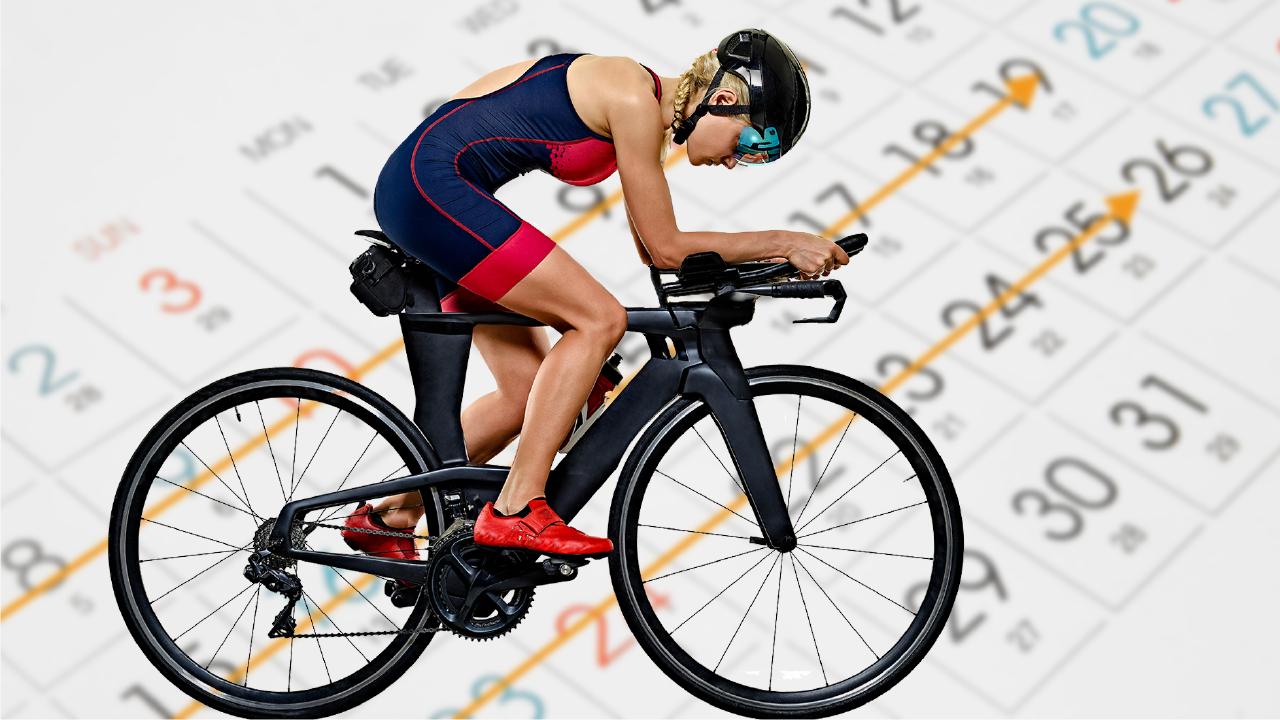Training and Racing Through PMS
Nov 02, 2022
By working with your premenstrual physiology, you can make progress (and yes, podiums) despite the challenges of premenstrual syndrome.
By now, you’ve heard me talk all about “period power”—that your menstrual cycle is when your body is more resilient to stress and a great time to nail your high-intensity sessions and nab PRs. But what about women who wrestle with PMS—the mood swings, fatigue, and other challenging symptoms that can occur during the week leading into your period? For many women, that doesn’t feel like a very powerful time of the month.
If you’re one of them, it’s not your imagination. Estrogen and progesterone ramp up and peak approximately five days prior to menstruation. This is when PMS kicks in, which can impact your training and performance in a number of ways.
- It’s harder to build muscle. Muscle protein synthesis is less robust, and we tend to be more catabolic in this high hormone phase.
- Metabolism shifts. We burn more fat and spare more glycogen. Our metabolism also ticks up a bit, burning about 100 to 200 additional calories a day. (Hence the cravings for carbs—our bodies want more energy).
- Blood plasma volume dips. High levels of estrogen cause fluid shifts (hello bloating), and your plasma volume can drop by as much as 8 percent. This can also cause your heart rate to increase.
- Temperature regulation is harder. Progesterone elevates core body temperature, and your blood plasma volume is lower, so it’s harder to sweat and cool off.
- Cramping and GI issues can occur. Your body releases prostaglandins during this phase to help shed your uterine lining. That means cramping and GI issues.
- Mojo can go MIA. Estrogen and progesterone affect the hypothalamus, and when they’re high, you can experience fatigue, lethargy, and low mood.
When you read all that, it’s easy to understand why women dread “that time of the month,” especially if they suffer from many symptoms of PMS. The good news is that you’re not doomed if a key event lands on a high hormone day!! Research shows that key performance indicators such as VO2 max and lactate threshold remain constant throughout your cycle. You can also take action to counteract the potentially detrimental aspects of the high hormone phase, so you can still perform your best.
Moreover, by training with your cycle, you can time your sessions so that you’re doing your hardest, heaviest training during lower hormone phases, when your body is primed for the intensity and work on your lower intensity, mobility, and technique sessions when your hormones are higher, thereby optimizing your efforts throughout your cycle. (Remember, training is different from on the day performance!!)
Minimizing the Physiological Effects of PMS
Managing PMS symptoms will help you be on your A-game during your high hormone phase. Here’s what I recommend.
Increase Your Electrolytes.
Bumping up your blood plasma volume by preloading your system with more electrolyte (especially sodium)-rich fluids during the high hormone phase will help your heart not have to work as hard and make it easier to sweat and keep cool. Try drinking miso soup, chicken broth, or specially formulated “preload” sports drinks that are higher in sodium the night before your event.
Manage Inflammation
A recent study presented during The North American Menopause Society (NAMS) Annual Meeting in Atlanta reported that what you eat can impact menstrual pain. Specifically, they found that diets high in omega-3 fatty acids and low in processed foods, oil, and sugar help reduce inflammation, which is a key contributor to cramping. Eating a less inflammatory diet makes sense for general health and especially for taming PMS.
I also recommend what I call my “PMS Stack”: 1 gram of Omega-3s, 45 milligrams of zinc and 200 milligrams of magnesium, and if you can take it, 80mg of aspirin or white willow bark, 7 to 10 days before your period starts every night. Over the course of three cycles, it lessens inflammation, bleeding, and PMS.
Give Yourself a Blood Sugar Boost
You burn more calories overall during your premenstrual phase and you spare more glycogen. Be sure to give your blood sugar a boost by fueling with carbs, especially before any long bouts of intense exercise. Aim for a combination of 40 grams of carbs and 10 to 15 grams of protein before any workout longer than 90 minutes, and 40 to 50 grams of carbs with protein and fat (through real food) per hour during long workouts.
Tap Into Some Easy Ergogenic Aids
Now is the time to reach for some easy energy boosters. One of my favorites is music. Even in my lowest energy times, the right playlist can give me just the lift I need to get going. Research also supports music as a good way to help manage PMS symptoms, and studies have found that music can help provide pain relief. Plus, music triggers brain chemicals that make us feel good and is known to improve performance. Even if you’re not one to listen to music while you work out, playing your favorite tunes while getting ready for an exercise bout can make it easier to get out the door!
Stay Connected!
Subscribe to get email notifications which include the 'Extra Bit'. In this segment, I relax (a bit) and talk about my less formal life.
We hate SPAM. We will never sell your information, for any reason.


